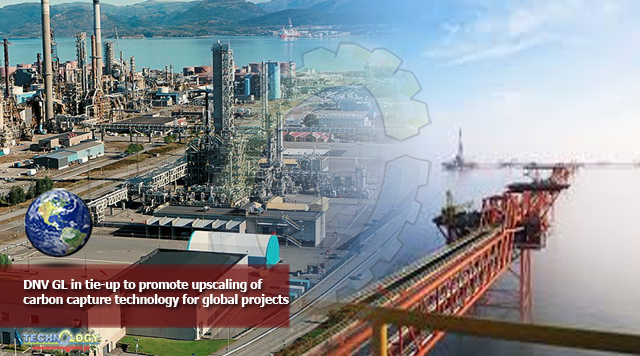DNV GL has forged a tripartite collaboration to promote the rapid upscaling of technologies for carbon capture technology, utilisation and storage (CCUS) projects worldwide.

The Norwegian risk and verification consultancy is teaming up with compatriots the Sintef research institute and Technology Centre Mongstad (TCM) under a memorandum of understanding to accelerate development of such technologies from the demonstration stage to full-scale commercial deployment on projects.
Energy explored: Gain valuable insight into the global oil and gas industry’s energy transition from Accelerate, the new weekly newsletter from Upstream and Recharge.
CCUS is expected to contribute to a reduction of more than 2 gigatonnes of carbon dioxide emissions by mid-century but scaling of such technology is seen as critical to achieving national and international targets for emissions cuts in line with the climate goals of the Paris Agreement.
However, scaling of technology for carbon capture is currently not expected to start before 2030 and will not achieve a significant level until 2040 without government incentives and cost-reduction initiatives by the energy industry, according to DNV GL.
The tie-up will provide resources for technology research, testing, advisory services and standardisation to promote adoption of CCUS in carbon-intensive industries such as the oil and gas sector.
TCM, which serves as a testbed for carbon capture technologies, can facilitate large-scale testing and verification of such technology to minimise technological and financial risk, DNV GL said.
Its managing director Ernst Petter Axelsen said this was “key to lower the cost and risk of deployment of the technologies at scale”.
DNV GL said itself and Sintef “can provide confidence to technology developers and stakeholders by guiding and supporting processes to qualify CO2 capture technology, and providing verification of assets, infrastructure and storage sites”.
The three parties provided input to Norway’s proposed Longship CCUS project that will entail a full-scale chain for carbon capture, backed by state funding of up to Nkr16.8 billion ($1.8 billion).
The project incorporates innovative elements including capture of CO2 emissions from the cement industry, transport of CO2 by ship, and temporary storage of CO2 prior to pipeline transportation and storage, according to DNV GL.
“There is a significant need to accelerate efforts to scale CCS technology to allow the world to move toward its net-zero targets with greater confidence,” DNV GL’s Oil & Gas chief executive Liv Hovem said.
Originally published at Up stream online